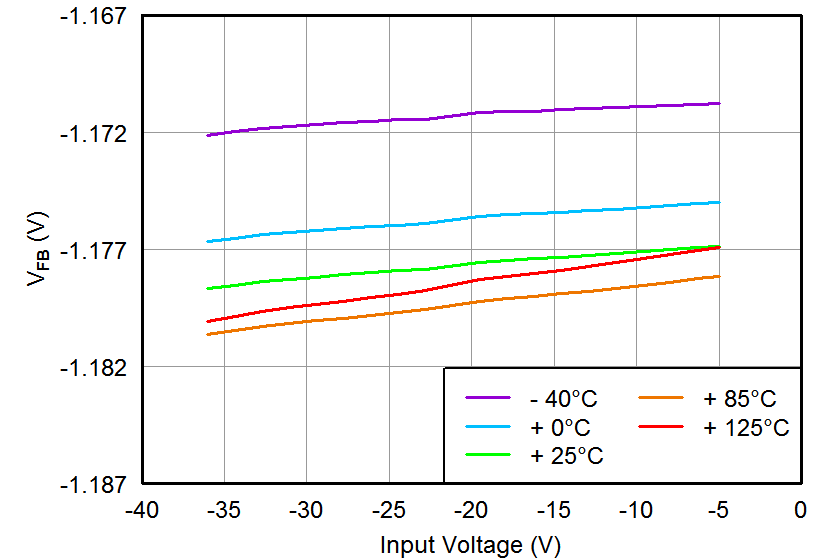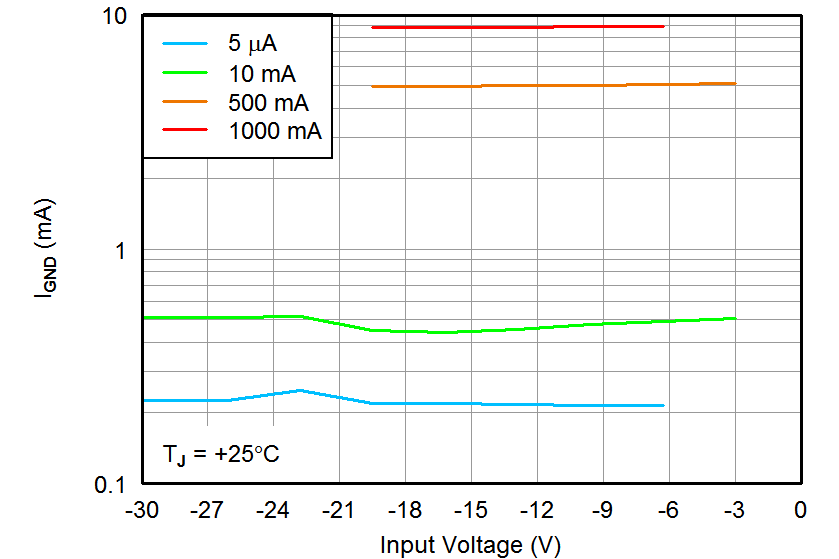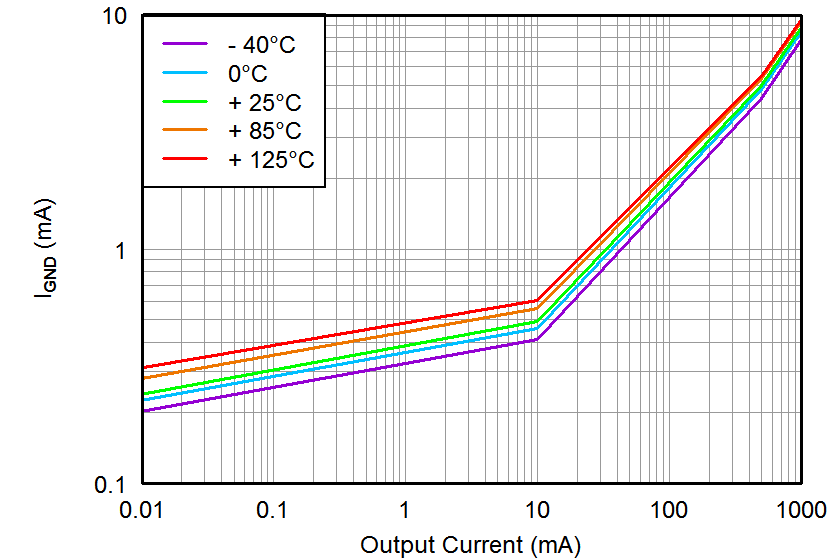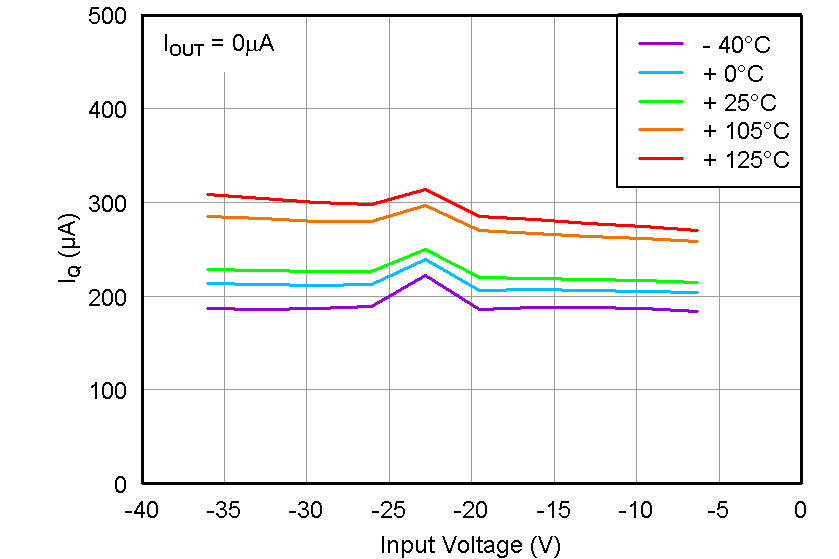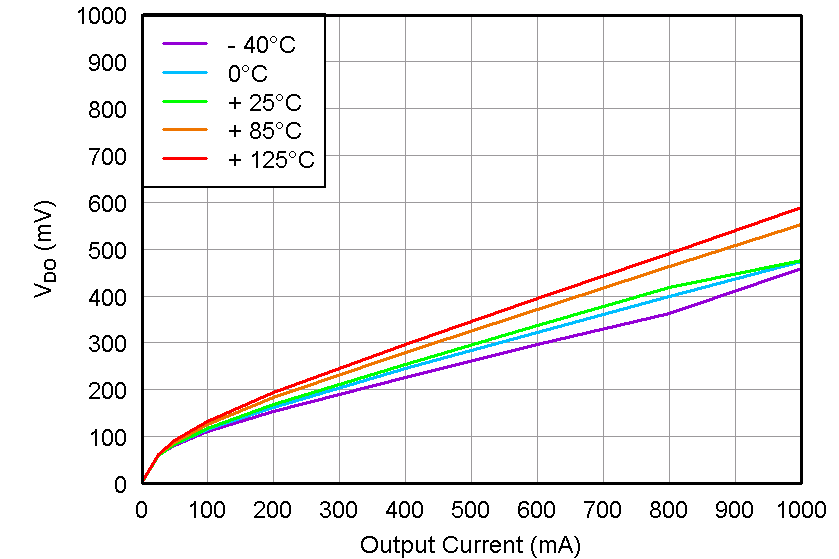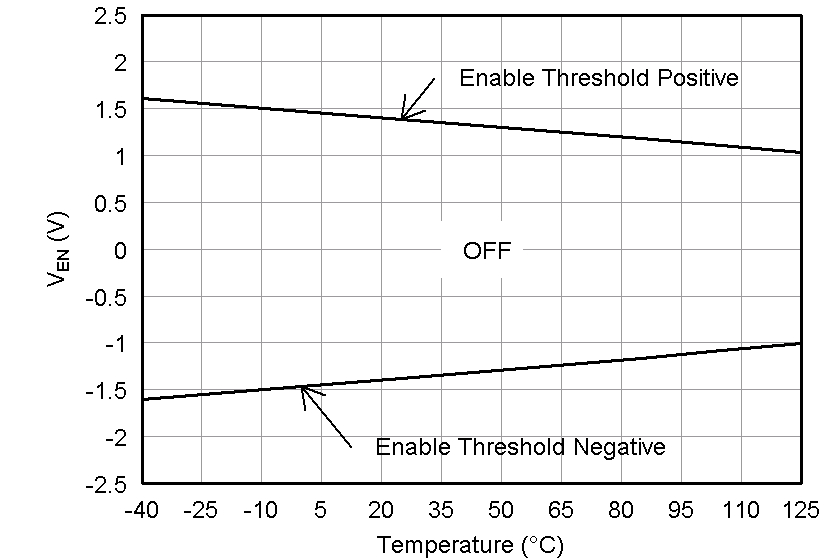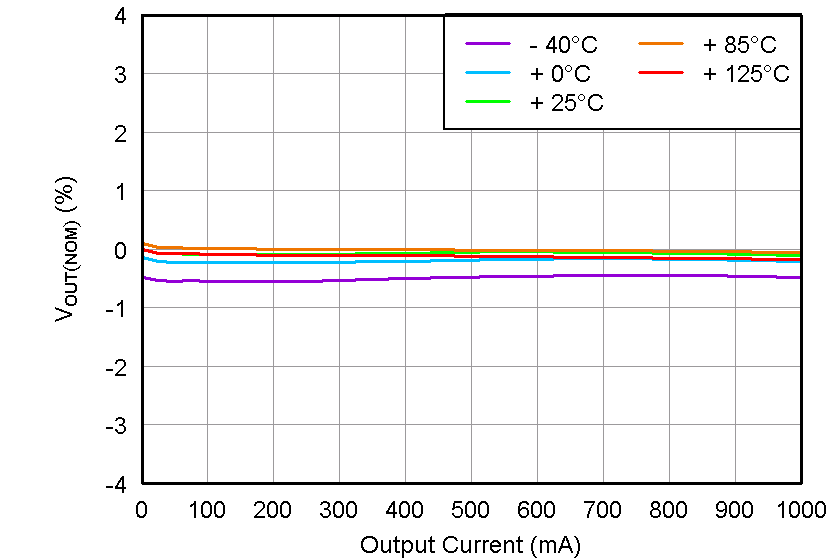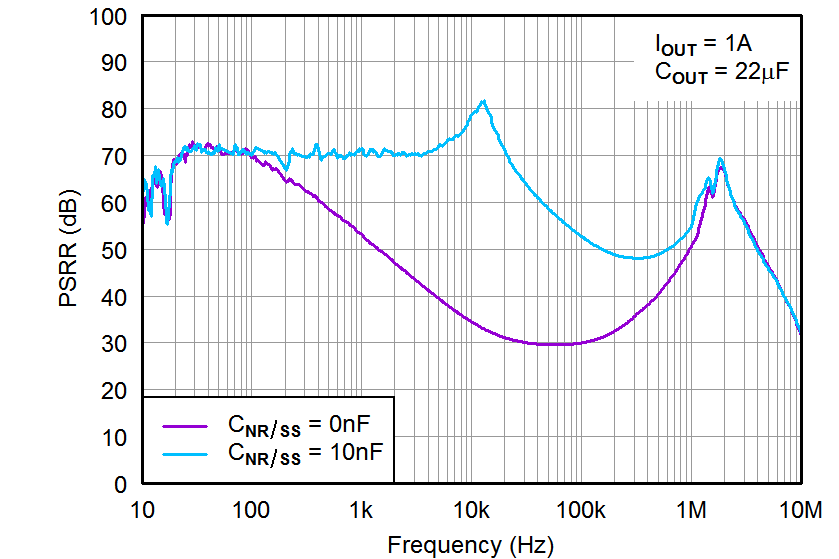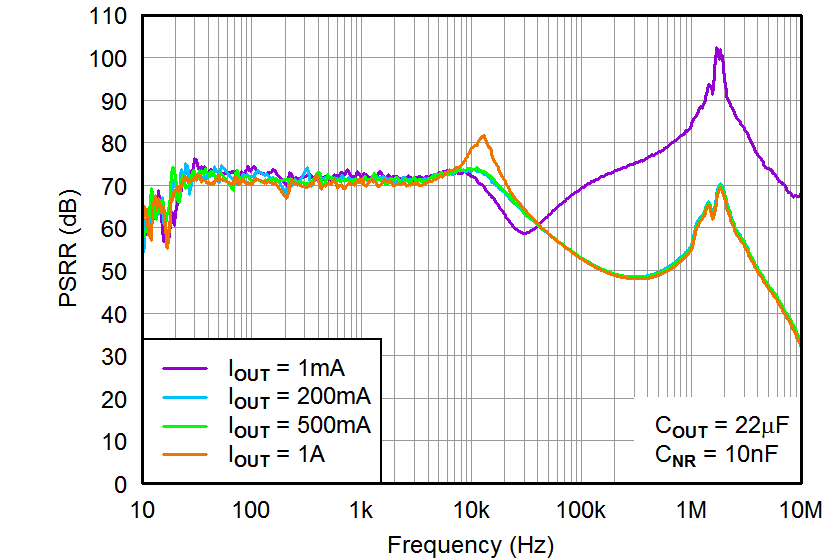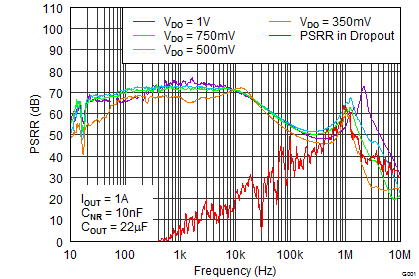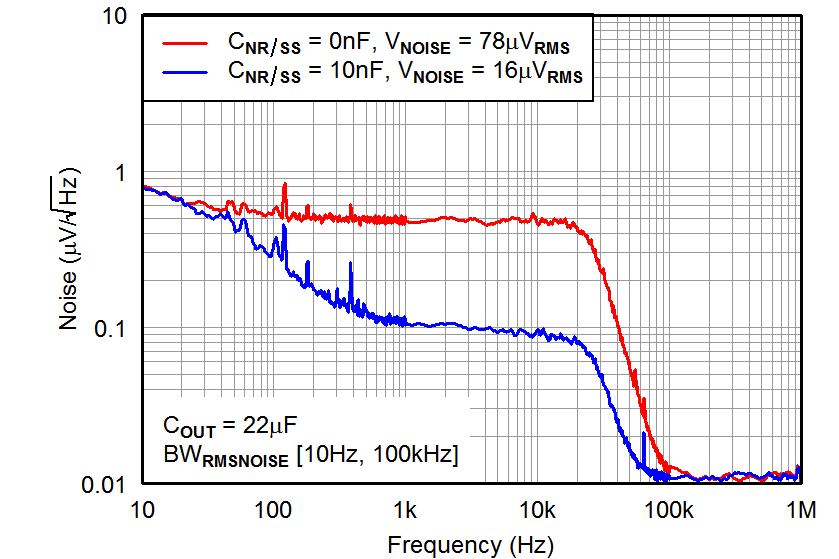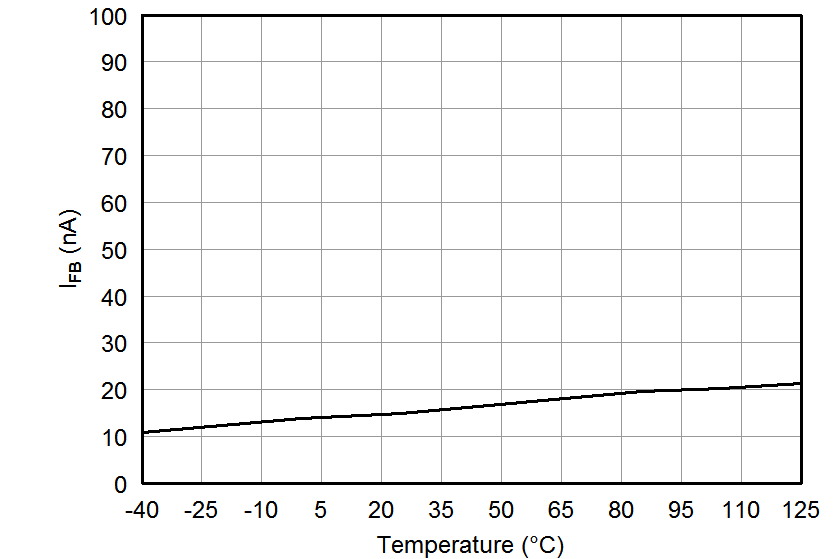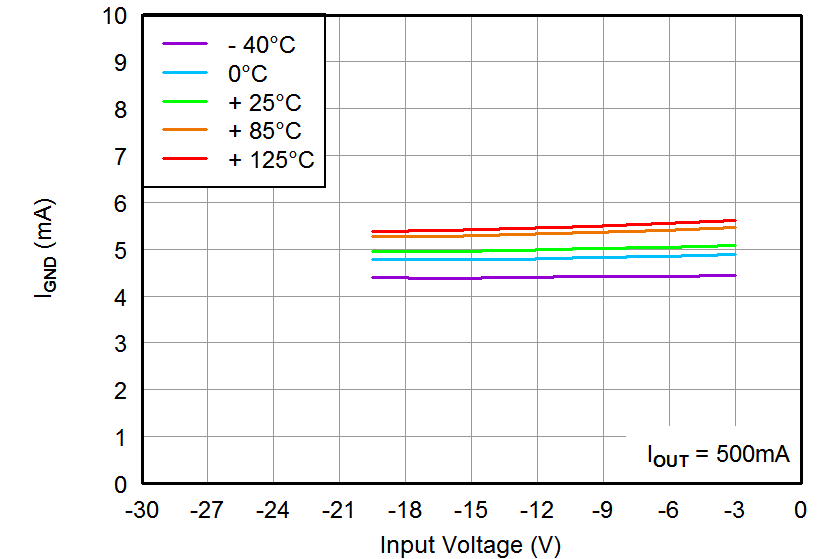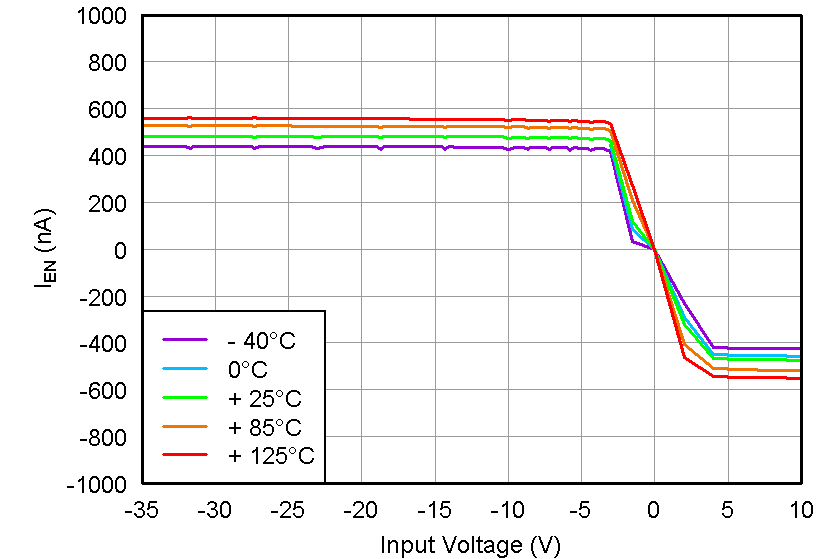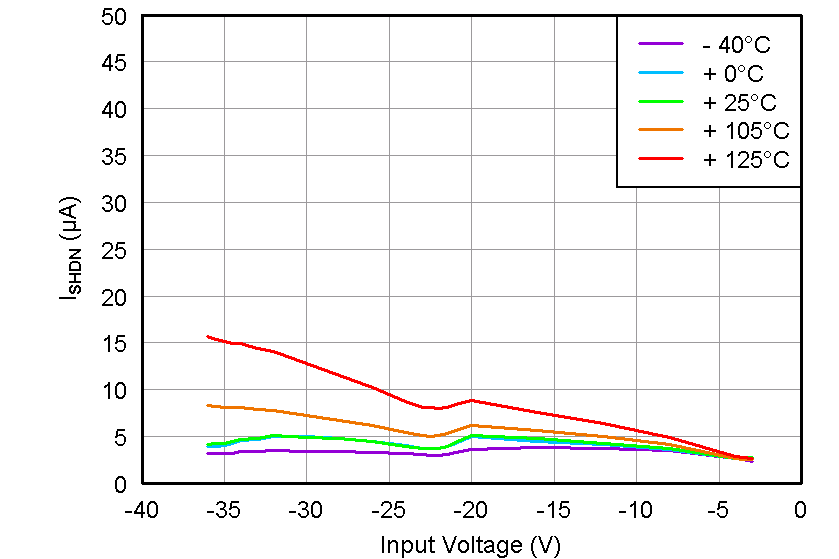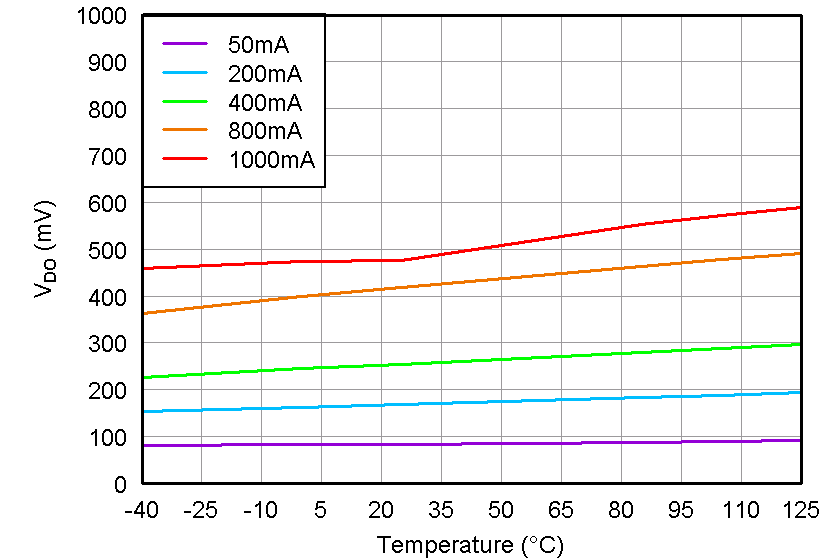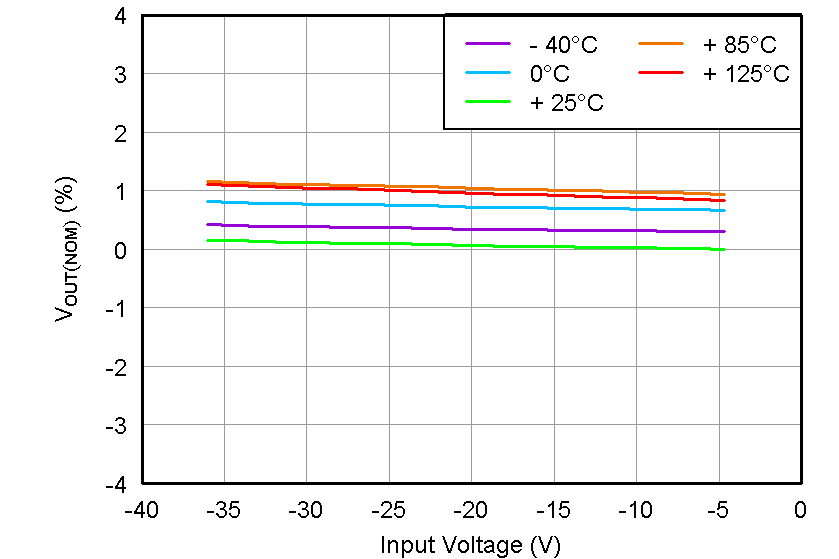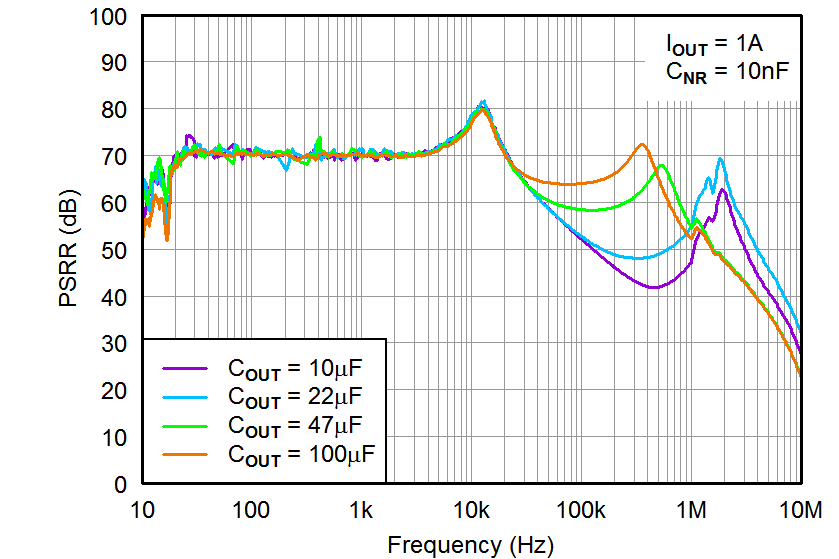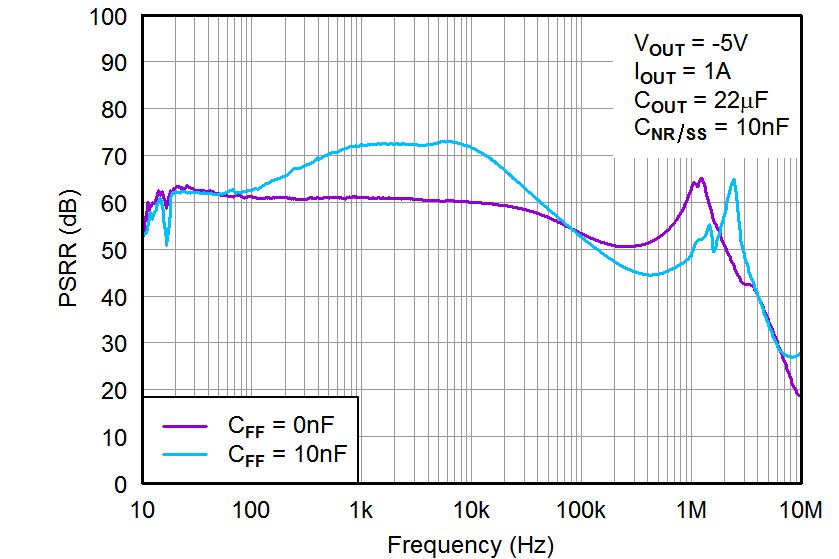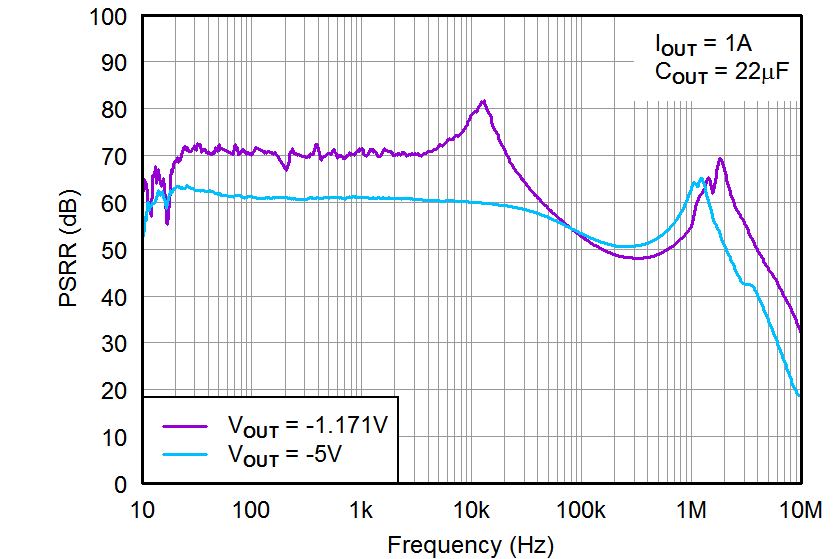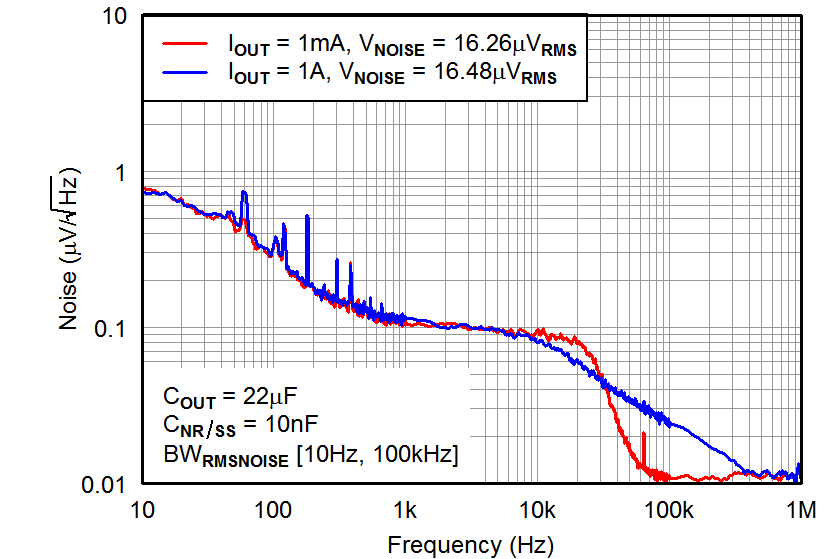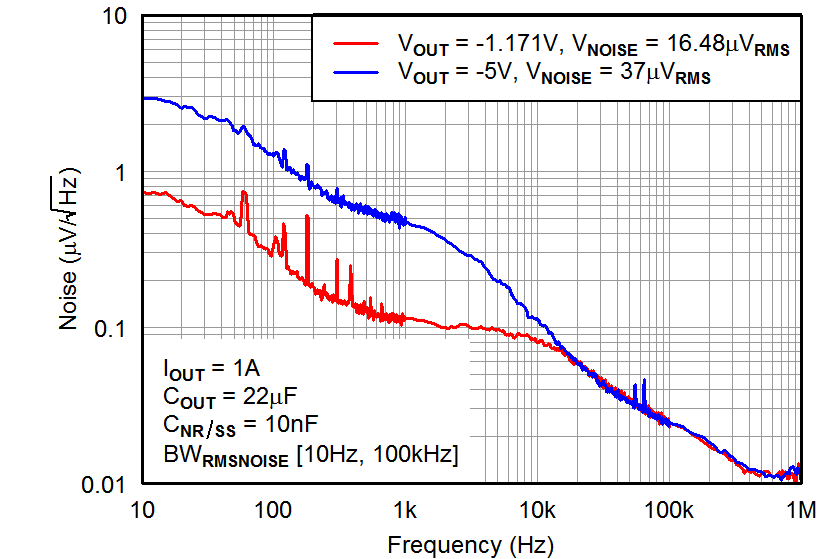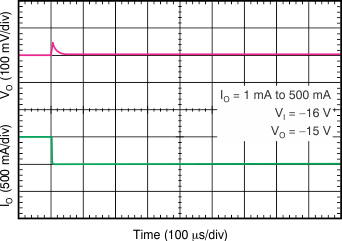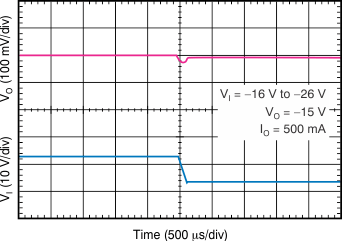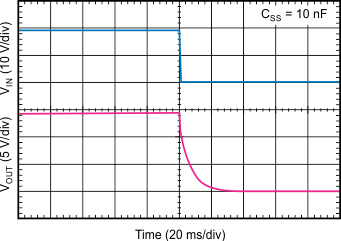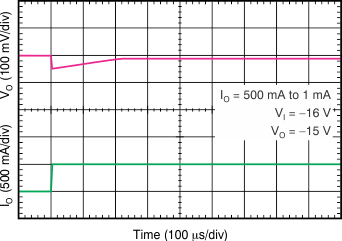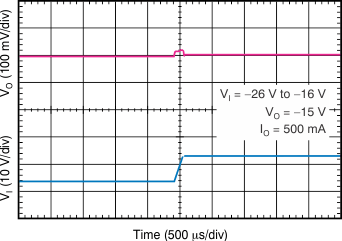ZHCS235D December 2011 – April 2015 TPS7A33
PRODUCTION DATA.
- 1 特性
- 2 应用
- 3 说明
- 4 修订历史记录
- 5 Pin Configuration and Functions
- 6 Specifications
- 7 Detailed Description
-
8 Application and Implementation
- 8.1
Application Information
- 8.1.1 Adjustable Operation
- 8.1.2 Capacitor Recommendations
- 8.1.3 Input and Output Capacitor Requirements
- 8.1.4 Noise Reduction and Feed-Forward Capacitor Requirements
- 8.1.5 Post DC-DC Converter Filtering
- 8.1.6 Audio Applications
- 8.1.7 Maximum AC Performance
- 8.1.8 Power-Supply Rejection
- 8.1.9 Output Noise
- 8.1.10 Transient Response
- 8.1.11 Power for Precision Analog
- 8.2 Typical Application
- 8.3 Do's and Don’ts
- 8.1
Application Information
- 9 Power Supply Recommendations
- 10Layout
- 11器件和文档支持
- 12机械封装和可订购信息
6 Specifications
6.1 Absolute Maximum Ratings
over operating free-air temperature range (unless otherwise noted) (1)(1) Stresses beyond those listed under Absolute Maximum Ratings may cause permanent damage to the device. These are stress ratings only, which do not imply functional operation of the device at these or any other conditions beyond those indicated under Recommended Operating Conditions. Exposure to absolute-maximum-rated conditions for extended periods may affect device reliability.
6.2 ESD Ratings
| VALUE | UNIT | |||
|---|---|---|---|---|
| V(ESD) | Electrostatic discharge | Human body model (HBM), per ANSI/ESDA/JEDEC JS-001, all pins(1) | ±1000 | V |
| Charged device model (CDM), per JEDEC specification JESD22-C101, all pins(2) | ±500 | |||
(1) JEDEC document JEP155 states that 500-V HBM allows safe manufacturing with a standard ESD control process.
(2) JEDEC document JEP157 states that 250-V CDM allows safe manufacturing with a standard ESD control process.
6.3 Recommended Operating Conditions
over operating free-air temperature range (unless otherwise noted)| MIN | NOM | MAX | UNIT | ||
|---|---|---|---|---|---|
| VIN | Input supply voltage | –35 | –3 | V | |
| VEN | Enable supply voltage | VIN | 10 | V | |
| VOUT | Output voltage | –33.2 | VREF | V | |
| IOUT | Output current | 0 | 1 | A | |
| R2(1) | R2 is the lower feedback resistor | 240 | kΩ | ||
| CIN | Input capacitor | 10 | 47 | µF | |
| COUT | Output capacitor | 10 | 47 | µF | |
| CNR | Noise reduction capacitor | 1 | µF | ||
| CFF | Feed-forward capacitor | 10 | nF | ||
| TJ | Operating junction temperature | –40 | 125 | °C | |
(1) This condition helps ensure stability at no load.
6.4 Thermal Information
| THERMAL METRIC(1) | TPS7A33 | UNIT | ||
|---|---|---|---|---|
| KC (TO-220) | RGW (VQFN) | |||
| 7 PINS | 20 PINS | |||
| RθJA | Junction-to-ambient thermal resistance | 31.2 | 33.7 | °C/W |
| RθJC(top) | Junction-to-case(top) thermal resistance | 40 | 30.4 | |
| RθJB | Junction-to-board thermal resistance | 17.4 | 12.5 | |
| ψJT | Junction-to-top characterization parameter | 6.4 | 0.4 | |
| ψJB | Junction-to-board characterization parameter | 17.2 | 12.5 | |
| RθJC(bot) | Junction-to-case(bottom) thermal resistance | 0.8 | 2.4 | |
(1) For more information about traditional and new thermal metrics, see the IC Package Thermal Metrics application report, SPRA953.
6.5 Electrical Characteristics
At –40°C ≤ TJ ≤ 125°C, |VIN| = |VOUT(nom)| + 1 V or |VIN| = 3 V (whichever is greater), VEN = VIN, IOUT = 1 mA, CIN = 10 μF, COUT = 10 μF, CNR/SS = 0 nF, and FB tied to OUT, unless otherwise noted.(1)| PARAMETER | TEST CONDITIONS | MIN | TYP | MAX | UNIT | |||
|---|---|---|---|---|---|---|---|---|
| VIN | Input voltage | –35 | –3 | V | ||||
| VREF | Internal reference | TJ = 25°C, VFB = VREF | –1.192 | –1.175 | –1.157 | V | ||
| VUVLO | Undervoltage lockout threshold | –2 | V | |||||
| VOUT | Output voltage range(2) | |VIN| ≥ |VOUT(nom)| + 1 V | –33.2 | VREF | V | |||
| Nominal accuracy | TJ = 25°C, |VIN| = |VOUT(nom)| + 0.5 V | –1.5 | 1.5 | %VOUT | ||||
| Overall accuracy | 5 V ≤ |VIN| ≤ 35 V 1 mA ≤ IOUT ≤ 1 A |
±1 | %VOUT | |||||
| |VOUT(nom)| + 1 V ≤ |VIN| ≤ 35 V 1 mA ≤ IOUT ≤ 1 A |
–2.5 | 2.5 | ||||||
| ΔVOUT(ΔVI) | Line regulation | |VOUT(nom)| + 1 V ≤ |VIN| ≤ 35 V | 0.14 | %VOUT | ||||
| ΔVOUT(ΔIL) | Load regulation | 1 mA ≤ IOUT ≤ 1 A | 0.4 | %VOUT | ||||
| |VDO| | Dropout voltage | VIN = 95% VOUT(nom), IOUT = 500 mA | 290 | mV | ||||
| VIN = 95% VOUT(nom), IOUT = 1 A | 325 | 800 | ||||||
| ICL | Current limit | VOUT = 90% VOUT(nom) | 1900 | mA | ||||
| IGND | Ground current | IOUT = 0 mA | 210 | 350 | μA | |||
| IOUT = 500 mA | 5 | mA | ||||||
| |ISHDN| | Shutdown supply current | VEN = +0.4 V | 1 | 3 | μA | |||
| VEN = –0.4 V | 1 | 3 | ||||||
| IFB | Feedback current(3) | 14 | 100 | nA | ||||
| |IEN| | Enable current | VEN = |VIN| = |VOUT(nom)| + 1 V | 0.48 | 1 | μA | |||
| VIN = VEN = –35 V | 0.51 | 1 | ||||||
| VIN = –35 V, VEN = +10 V | 0.5 | 1 | ||||||
| VEN(+HI) | Positive enable high-level voltage | 2 | 10 | V | ||||
| VEN(+LO) | Positive enable low-level voltage | 0 | 0.4 | V | ||||
| VEN(–HI) | Negative enable high-level voltage | VIN | –2 | V | ||||
| VEN(–LO) | Negative enable low-level voltage | –0.4 | 0 | V | ||||
| Vn | Output noise voltage | VIN = –3 V, VOUT(nom) = VREF, COUT = 22 μF, CNR/SS = 10 nF, BW = 10 Hz to 100 kHz | 16 | μVRMS | ||||
| PSRR | Power-supply rejection ratio | VIN = –6.2 V, VOUT(nom) = –5 V, COUT = 22 μF, CNR/SS = 10 nF, CFF(4) = 10 nF, f = 10 kHz | 72 | dB | ||||
| Tsd | Thermal shutdown temperature | Shutdown, temperature increasing | 170 | °C | ||||
| Reset, temperature decreasing | 150 | °C | ||||||
| TJ | Operating junction temperature | –40 | 125 | °C | ||||
(1) At operating conditions, VIN ≤ 0 V, VOUT(nom) ≤ VREF ≤ 0 V. At regulation, VIN ≤ VOUT(nom) – |VDO|. IOUT > 0 flows from OUT to IN.
(2) To ensure stability at no load conditions, a current from the feedback resistive network equal to or greater than 5 μA is required.
(3) IFB > 0 flows into the device.
(4) CFF refers to a feed-forward capacitor connected between the FB and OUT pins.
6.6 Typical Characteristics
At –40°C ≤ TJ ≤ 125°C, |VIN| = |VOUT(nom)| + 1 V or |VIN| = 3 V (whichever is greater), VEN = VIN, IOUT = 1 mA, CIN = 22 μF, COUT = 22 μF, CNR/SS = 0 nF, and the FB pin tied to OUT, unless otherwise noted.